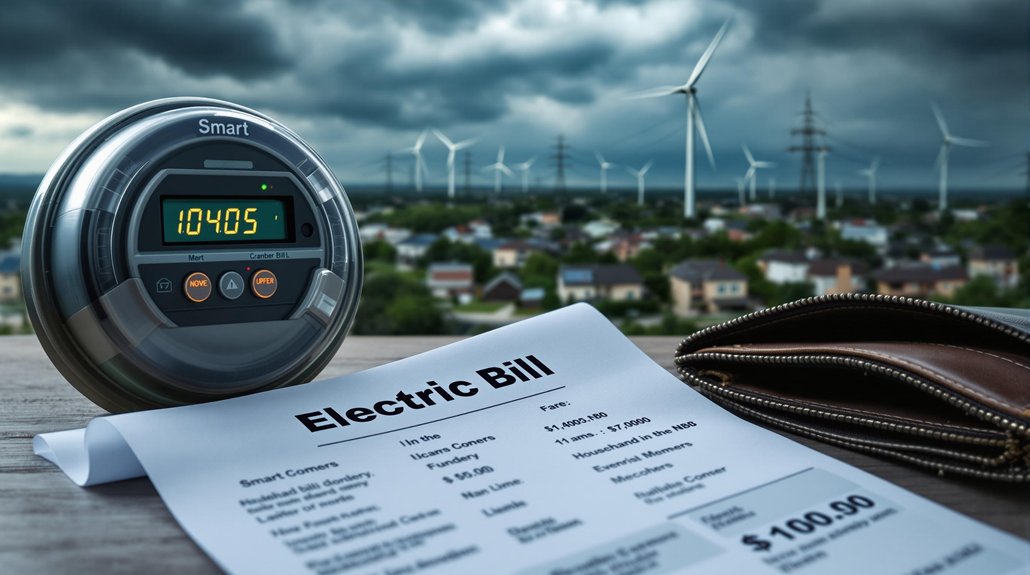Electric bills are rising in states with renewable energy mandates. Data shows that regions with high renewable requirements have electricity rates 27-50% higher than those without. The average household in these states pays up to $1,000 more annually, with low-income families bearing the heaviest burden. Businesses face tens of thousands in additional costs, affecting their competitiveness. The connection between green policies and rising costs continues to spark debate nationwide.
As more states adopt renewable energy requirements, consumers are seeing higher electricity bills across the country. Currently, 29 states plus Washington D.C. and Puerto Rico have Renewable Portfolio Standards (RPS) that force utilities to get a certain percentage of their electricity from renewable sources like wind and solar.
These mandates raise electricity prices by 2-13% according to various studies. States with high renewable requirements have electricity rates 27-50% higher than states without such rules. The average household in these states may pay up to $1,000 more per year for electricity.
The price increases hit low-income families hardest since they spend a larger portion of their income on energy bills. Businesses aren’t spared either. Many face tens or hundreds of thousands of dollars in additional energy costs, with manufacturing companies feeling the greatest impact.
The gap between the most and least expensive states for electricity has grown wider since 2004. The five most expensive states now charge 2.6 times more than the five least expensive. Many of these high-cost states have strict renewable mandates. California, for example, aims for 60% renewable energy by 2030 and 100% by 2045.
Renewable energy also poses reliability challenges. Wind and solar don’t produce consistent power, creating grid stability issues. The Midcontinent Independent System Operator has warned about declining grid capacity as more renewables come online. This raises the risk of blackouts during peak demand. Studies show that these challenges emerge as electricity prices reverse a decades-long trend of decline that had persisted until around 2005.
Several policy factors drive these rising costs. Federal regulations are forcing coal and natural gas plants to close. Some states restrict natural gas infrastructure. Carbon pricing programs add more costs, while renewable subsidies distort electricity markets. In California, utility bills have increased by as much as 127% over a decade as utilities invest billions in wildfire prevention and renewable energy infrastructure.
Regional differences tell the story clearly. Coal-dependent states with RPS saw a 54.2% price increase from 2001-2010, while similar states without these mandates experienced only half that jump. California residents pay 50-100% more than those in states with market-based approaches. The high initial investment costs of installing renewable infrastructure are typically passed directly to consumers through rate increases.









